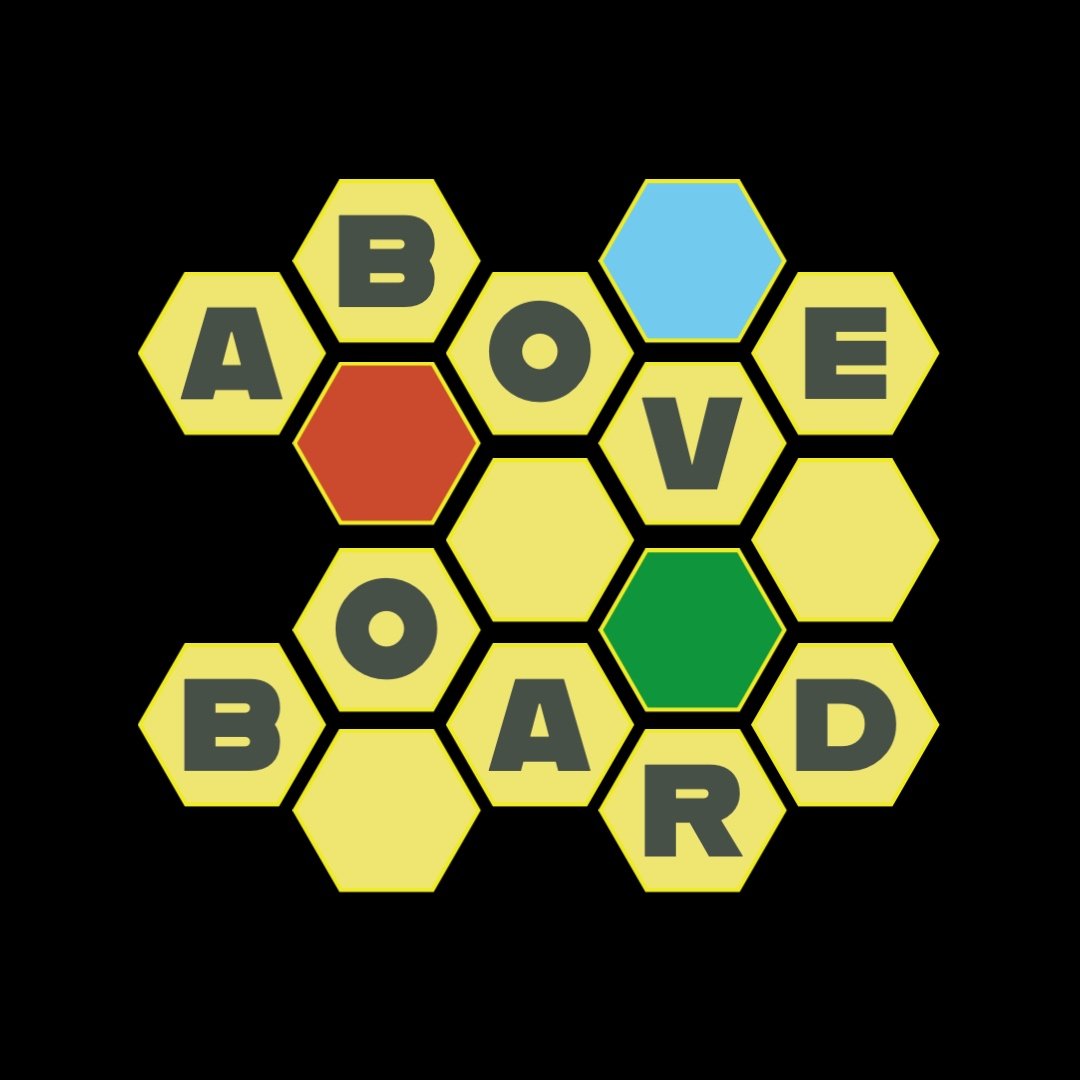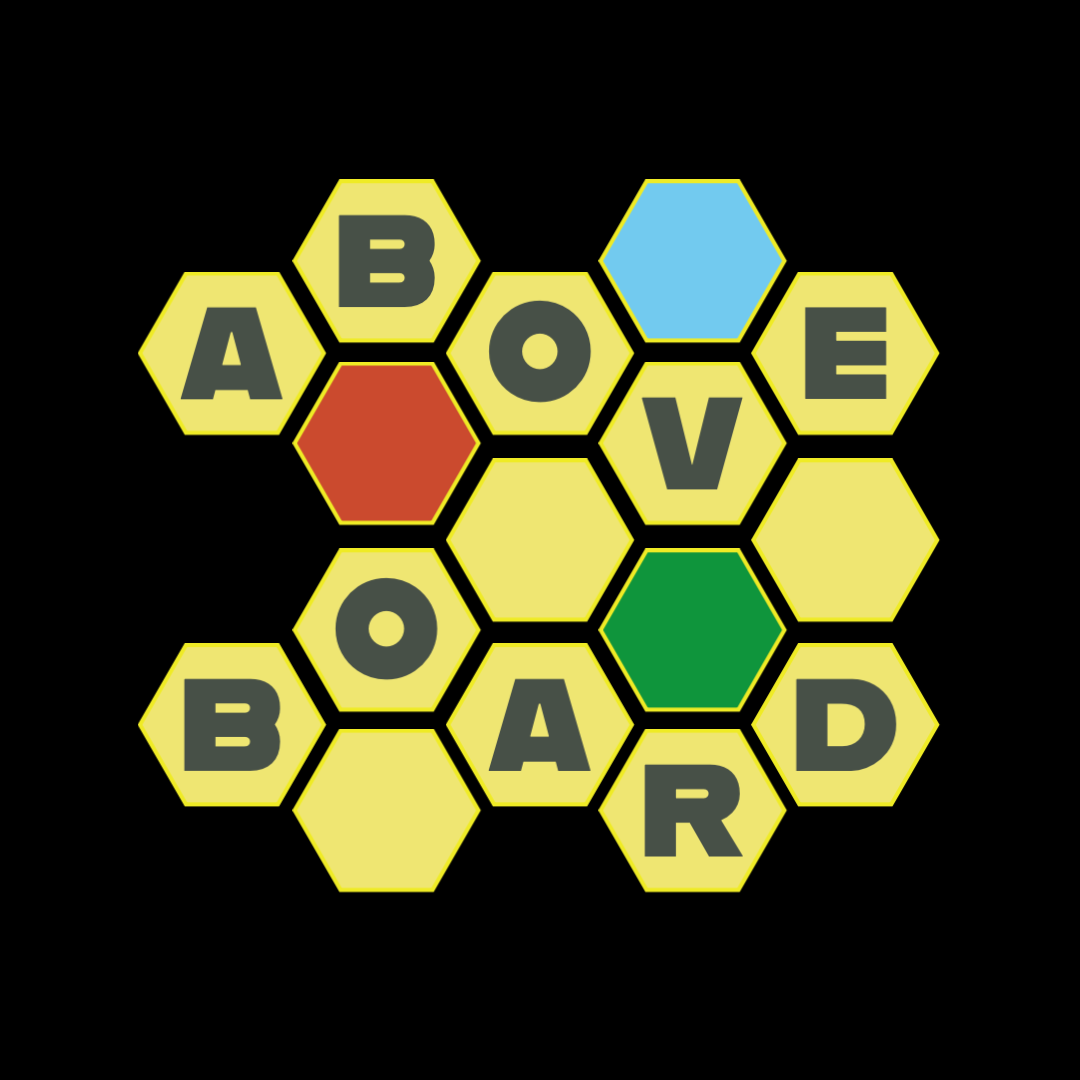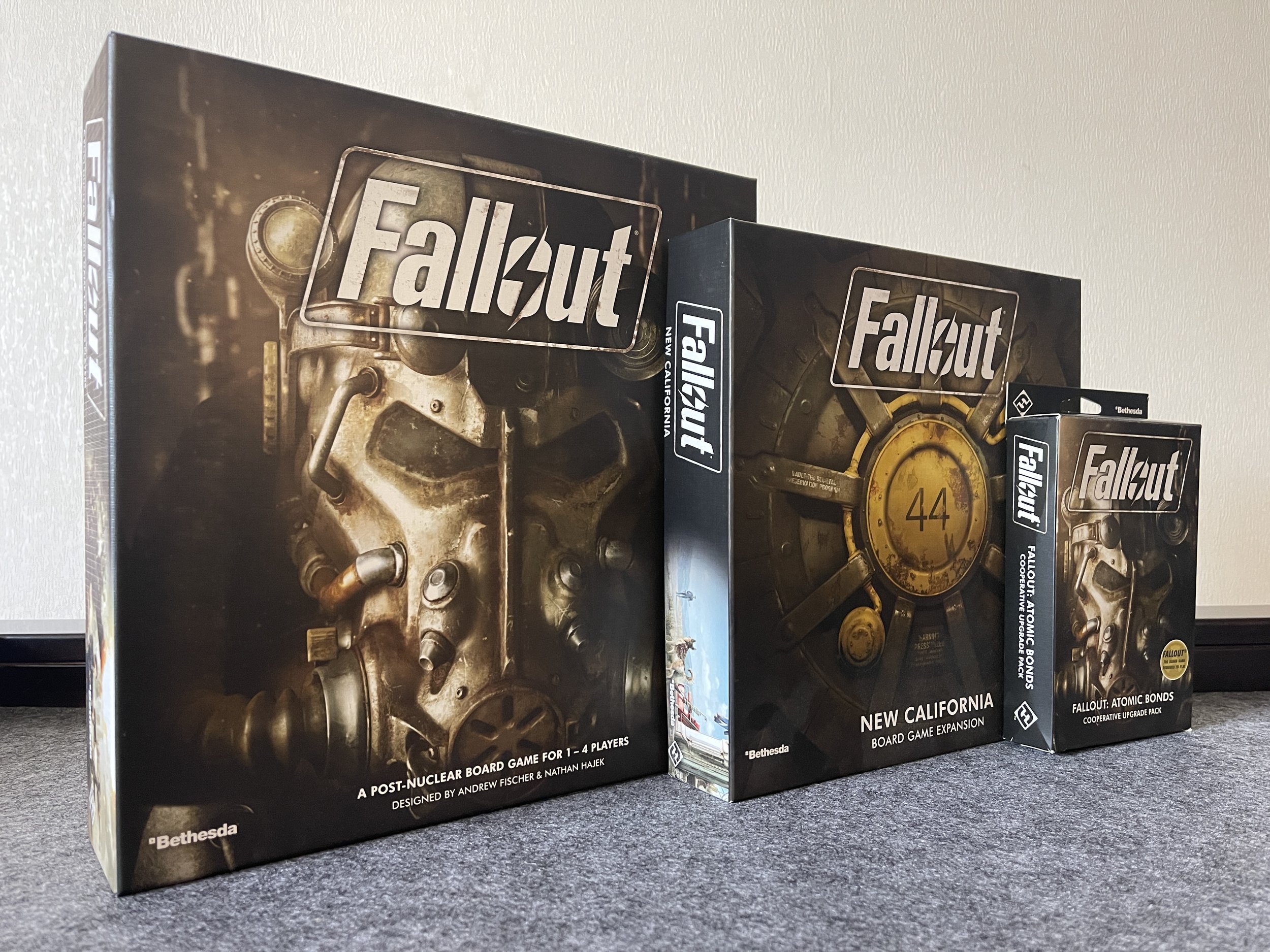Fallout Review
War. War never changes. Unless you add an expansion, and then another one that adds cooperative play.
1-4 Players 120-180 Minutes Age: 14+
Designers: Andrew Fischer, Nathan I. Hajek
Artists: Andrew Fischer, Nathan I. Hajek, Brian Schomburg, Evan Simonet, Ben Zweifel
Publisher: Fantasy Flight Games (FFG)
I Don’t Want To Set The World On Fire
Fallout is a 1-4-player adventure game from Fantasy Flight Games (FFG) in which players take on the roles of survivors in the Wasteland made famous by the video game series of the same name. The action takes place on a world map made up of hexagonal tiles most of which remain face down until they’ve been ‘explored’. Players choose a scenario before they begin which shows how to configure the map and indicates which factions, enemies, starting and revealed locations, and introductory events to prepare.
Play progresses turn by turn as players, using two actions each per turn, wander the wasteland and seek to uncover its secrets, encounter the denizens of the various settlements, and engage in quests resulting in some tough decisions that will reward or hinder the survivors.
My first introduction to the world of Fallout was way back in 1997 when I downloaded the free demo which was to become the first of many incredible entries in the Fallout series. Fallout and Fallout 2 were 2D isometric RPG games in the similar style of Baldur’s Gate and Planescape Torment. The action was a simple point-and-click and switched to turn-based play when in combat. I remember how the world felt very different compared to the other games I’d played up to that point. The world of Fallout was dark, tragic, and strange and yet still encompassed a healthy balance of high-stakes heroism, quirky humour, and decision-making with consequences. It was a revolution in gaming and it changed the landscape for many games to follow. Fast forward twenty years to 2017 and the release of Fallout, now in board game form, and it was hearting to see one of my favourite video game franchises brought to life on the tabletop…. until I played it. I ended up disliking Fallout (the board game, from here on simply referred to as Fallout) as I detailed in this earlier video review of mine.
If you didn’t end up watching that, the long and short of it was the game fell flat for me. The gameplay seemed shallow and a little mean-spirited and I wasn’t a fan of how the game allowed other players to ‘snipe’ quests. The overall competitive nature of the game turned me off and even as a simple player game, I just wasn’t feeling it. So I sold it on and went back to playing Fallout 4.
Then FFG released the New California expansion, while this increased the options in the game by providing more robust content, including new quests, locations, and characters, it still took until the following small box expansion, Atomic Bonds which introduced cooperative play, to fix some of the original game’s flaws. It was at this point that Fallout finally came into its own, and upon the recommendation of a friend who swore by the changes, I did the only reasonable thing, I purchased all three entries and sat them on my shelf to collect dust.
Now, with the renewed buzz caused by the well-received Fallout show, I felt the time was right to revisit the game, update my thoughts on the original, and see how it’s evolved as a result of the expansions. To my surprise, the game felt different enough that, while it kept the theme and charm in place, it made for a more satisfying adventure overall. As such, if you want to know how Fallout sits currently, I’ll be talking about it as a whole package, the core game, New California, and Atomic Bonds, which I have combined into the core box as a complete experience. I won’t ever be separating them and as far as the rest of this review is concerned they make up the game, Fallout. If you’d prefer to know what the original experience was like, then I humbly refer you to my video review from earlier.
Maybe
Just what does this new, improved Fallout do so well? To begin with, Fallout emulates the over-world exploration from the video games by providing a large, unexplored region of the wasteland for characters to sandbox their time away, but managing to reign in the experience enough to keep the play time focused on the players’ goals. While you are free to just pick a random direction and go for it, doing so may inevitably hand victory to the enemy faction. Therefore, I think a guided exploration spiking a balance between random encounters and main quests works best. You want to engage in a variety of quests to gain equipment and experience to aid you in the game’s late stage.
In terms of world-building, the characters, quests, locations, and creatures all feel familiar and provide a strong representation of the world of Fallout. Some characters are even taken straight from the video games, so it’s always a fun Easter egg hunt to find those hidden references. Fallout provides a sprawling, ever-changing landscape of characters, events, and missions to complete, so players a never lacking for something to do. Every space contains something worth looking into, whether it’s a settlement to engage in trade, an encounter with a denizen of the wastes, or the ruins of a bygone era, now rich with forgotten technology and bottle caps.
Fallout game sessions focus on a single scenario each of which provides a framework for branching storylines based on the player’s decisions and pits the players against one of the Wasteland’s many disparate factions. Much like how each of the Fallout video games has an overarching storyline, you’re free to play around as much as you like within it, but from time to time you’ll need to check in with the main story to ensure your enemies aren’t gaining the upper hand. In the original game, these scenarios were less collaborative and often led to a certain amount of backstabbing for a single player to come out on top. Here though, the focus is on forming a cohesive party of characters that work towards a common goal.
One of the more welcome elements that Atomic Bone adds to the game is the assist die. This dice allows characters who are within proximity of one another to offer aid during combat or skill checks. this is a delightful touch and increases player engagement, encouraging groups to explore together rather than running off like hyperactive children at an all-you-can-eat dessert buffet.
Aesthetically, Fallout is on point. Everything from the character minis, artwork, and exploration tiles is given the full treatment. Even the double-layered player boards resemble the readouts of a Pip-Boy and make character advancement a snap. Leveling up is handled well, keeping the process quick and simple, putting the game’s pace ahead of a depth of options, but this is to its credit. The process is intuitive, low maintenance, and makes sense.
Into Each Life Some Rain But Fall
The Wasteland is still the Wasteland however and there are still a few cracks in the game’s irradiated surface. The game needs Atomic Bonds to really shine in my opinion. The base game’s gameplay is a swing and a miss due to the competitive nature of the game and the ability for characters to swoop in and steal victory from others, so having it converted into a fully cooperative experience with little to no significant changes to the overall rules is a real win. On its own, the gameplay just doesn’t feel right, it lacks a certain depth that Atomic Bonds, and even more so with New California, addresses well. Without the expansions, Fallout feels like a could’ve been rather than a must-have.
Another point to keep in mind is that Fallout is very long, though this is subjective and for many, a lengthy game of Fallout is exactly what they ordered. I can’t count the number of literal days of game time I’ve racked up in Fallout’s video game series, but a tabletop game isn’t as easy to save and exit and therefore you need to set aside a good deal of time beforehand and ensure all the players are aware and prepared for a lengthy session.
A Kiss To Build A Dream On
The art and components in Fallout are of the expected high quality from FFG. The art, minis, and components seem taken straight out of the beloved video games and given life in a tabletop setting. The familiar browns and greens are present throughout, providing a thematic backdrop to the game. However, no Fallout game could be complete without the appearance of Vault Boy, his thumb proudly displayed in the customary upright position.
The double-layered player boards are restrained and provide players with just enough to manage their characters without feeling overwhelmed. The custom dice, beautifully rendered exploration tiles and even the Nuka Cola caps for coins all felt great to manipulate on the table, providing a wonderfully tactile experience in what has up until now, been a largely digital one.
The Wanderer
While I wasn’t particularly enamoured with the base game upon release, following my friend’s advice, I’m pleased I decided to revisit this one. With the added expansions, Fallout feels like the game it should have been upon release. Originally it was a rare miss for FFG at a time when it seemed they could do no wrong, so it’s great to see them stick by their game and listen to the community’s feedback. The result is a robust and rewarding Fallout board game experience that, while still not perfect, is still the best tabletop version of Fallout currently available. I would now, not hesitate to send you, dear readers, out into that irradiated Hellscape! You’re welcome.
Thank you for joining me again and I hope you enjoyed this review. What are your thoughts on Fallout, did you enjoy it from the beginning, or did it take the additional content to make it sing for you all well? As always I warmly invite your comments below or over on our Above Board Facebook group or check us out on Instagram. Until next time, keep that rad counter quiet and your power armour charged!














